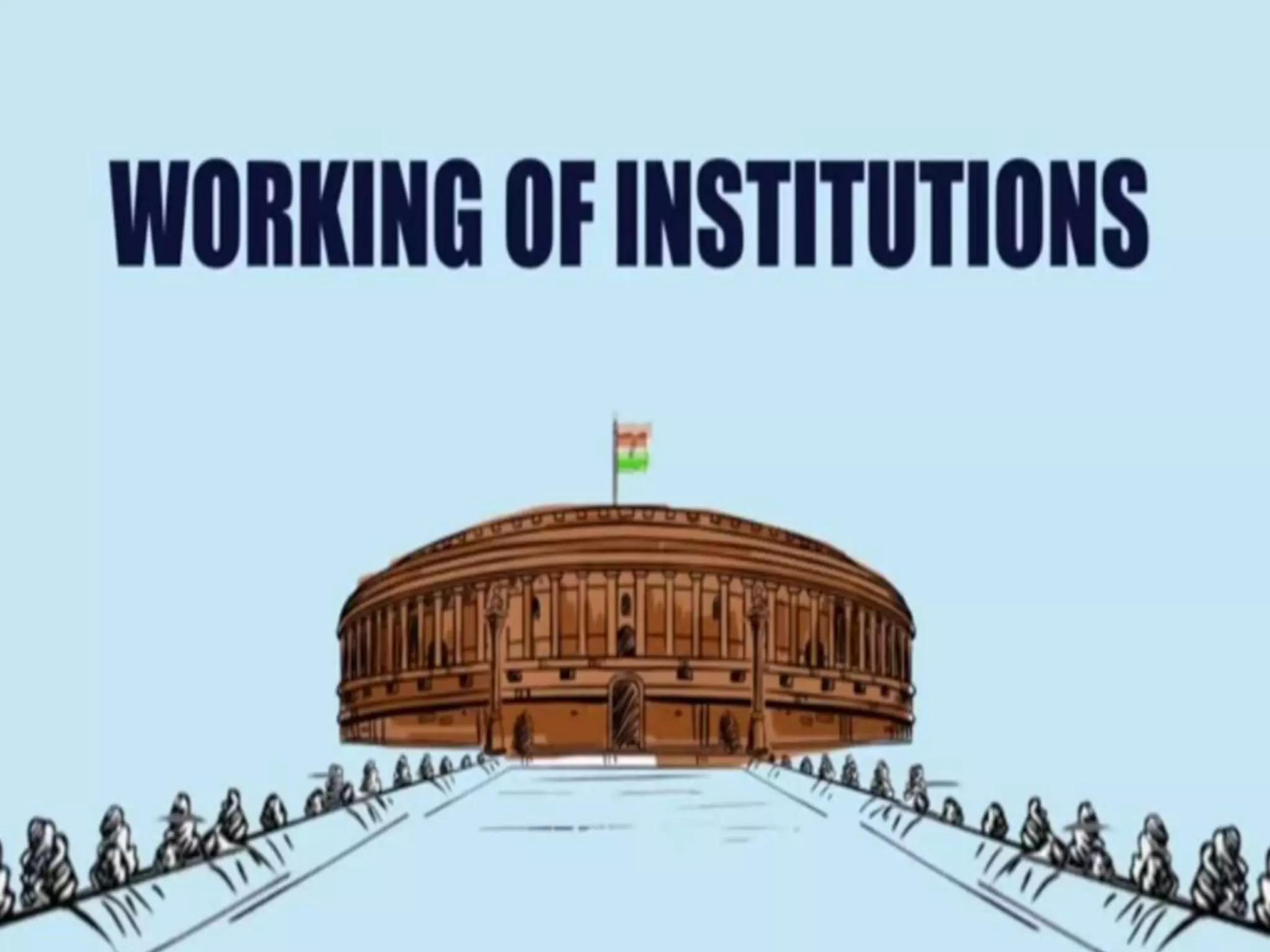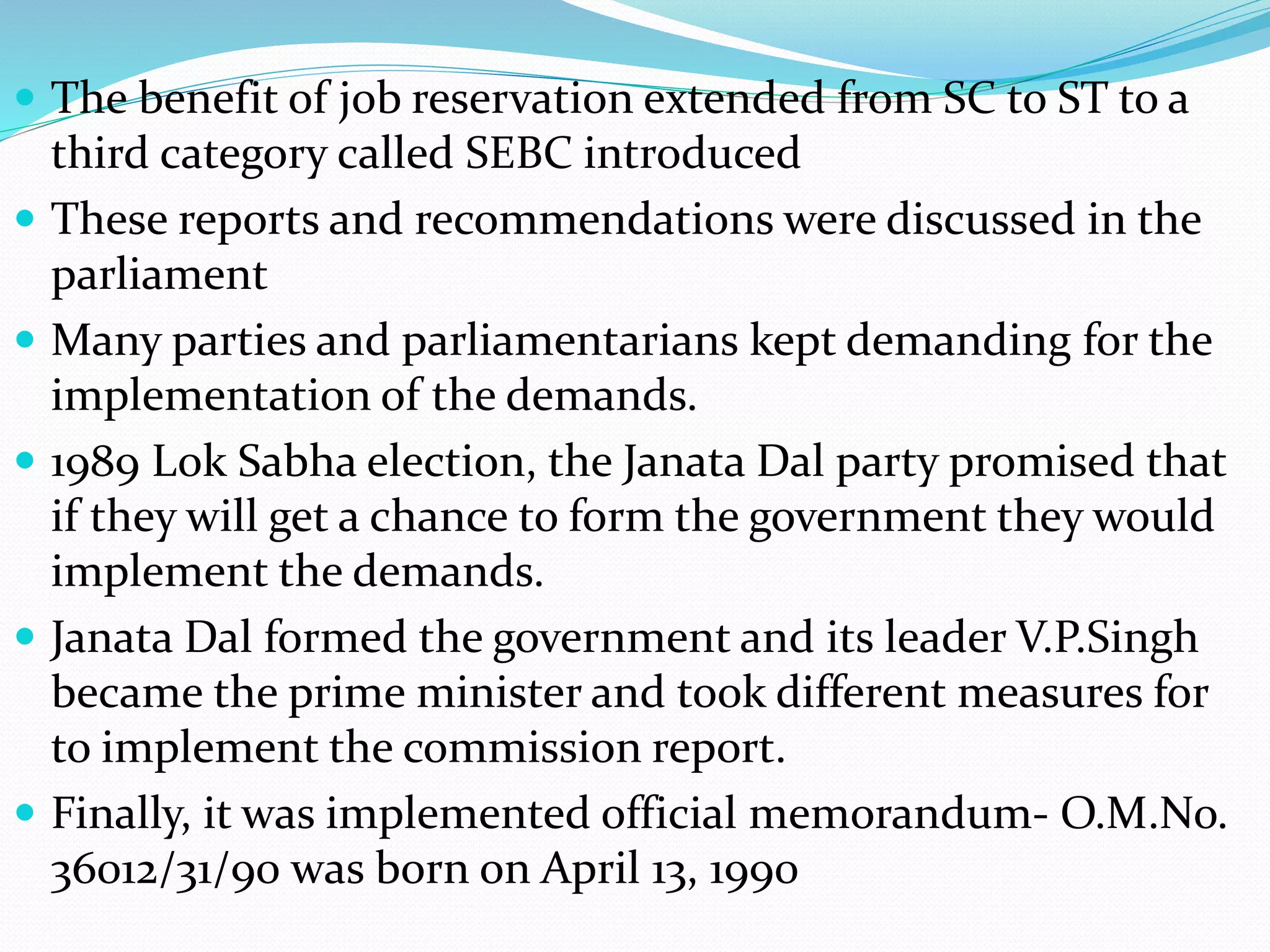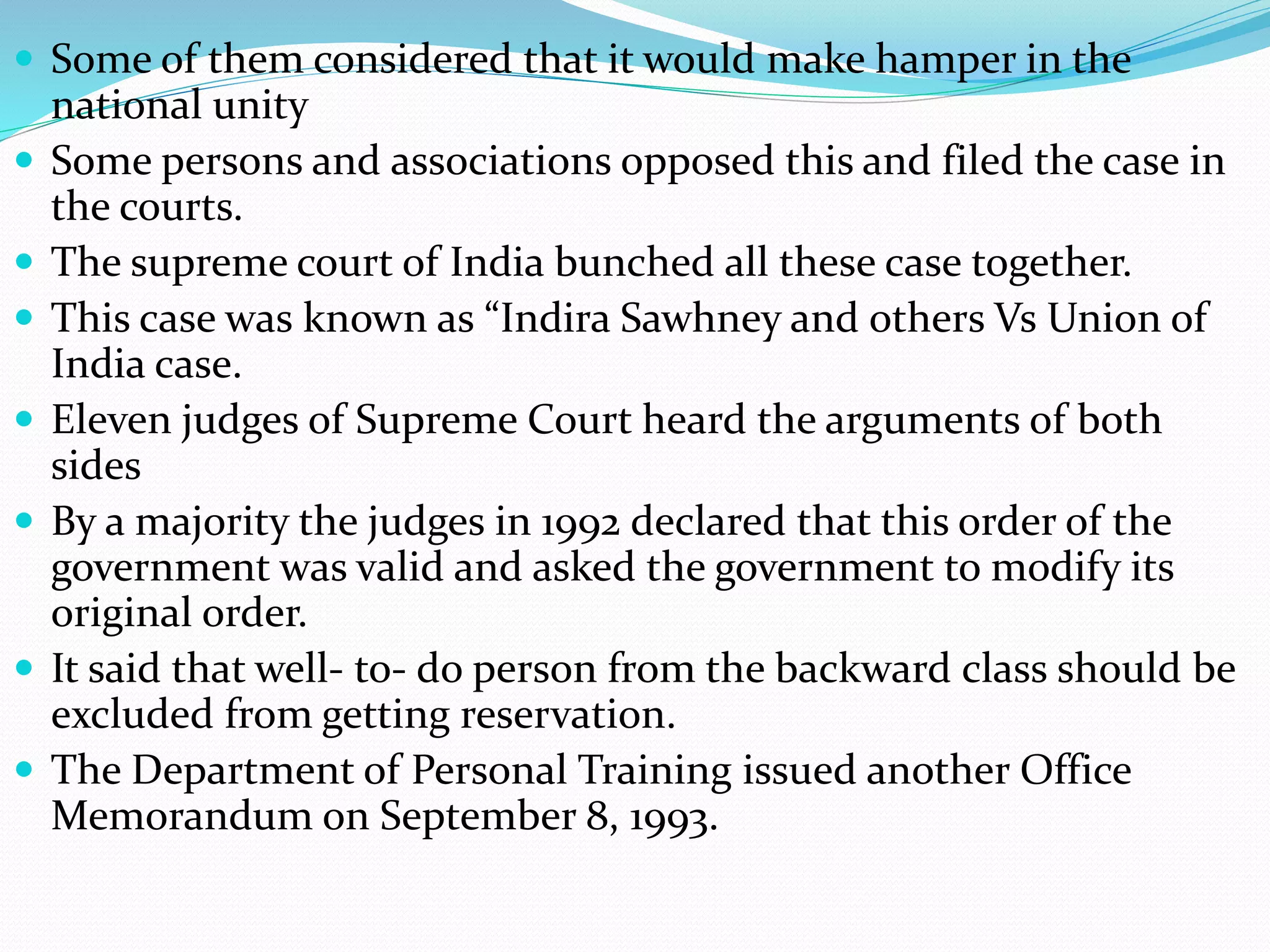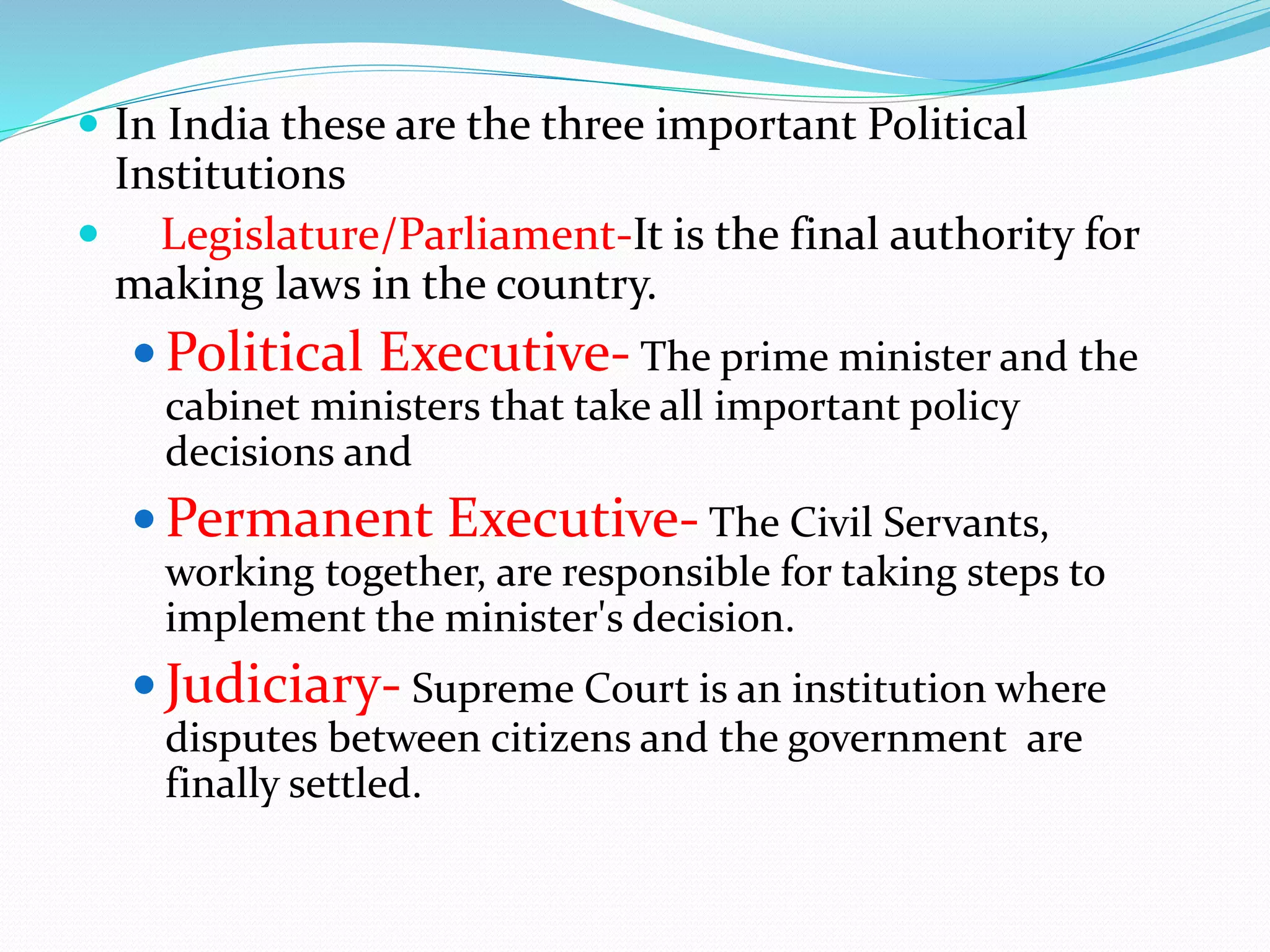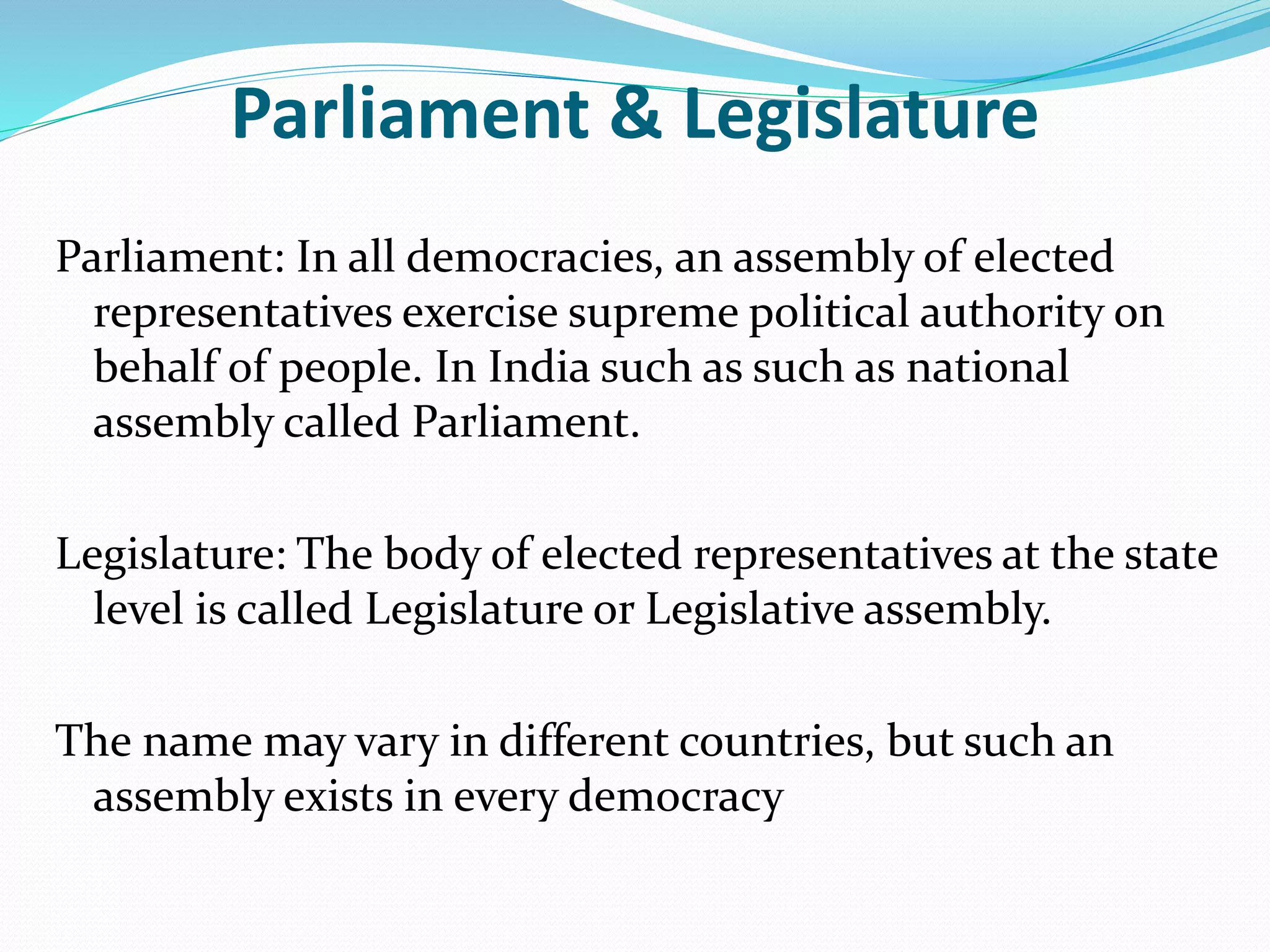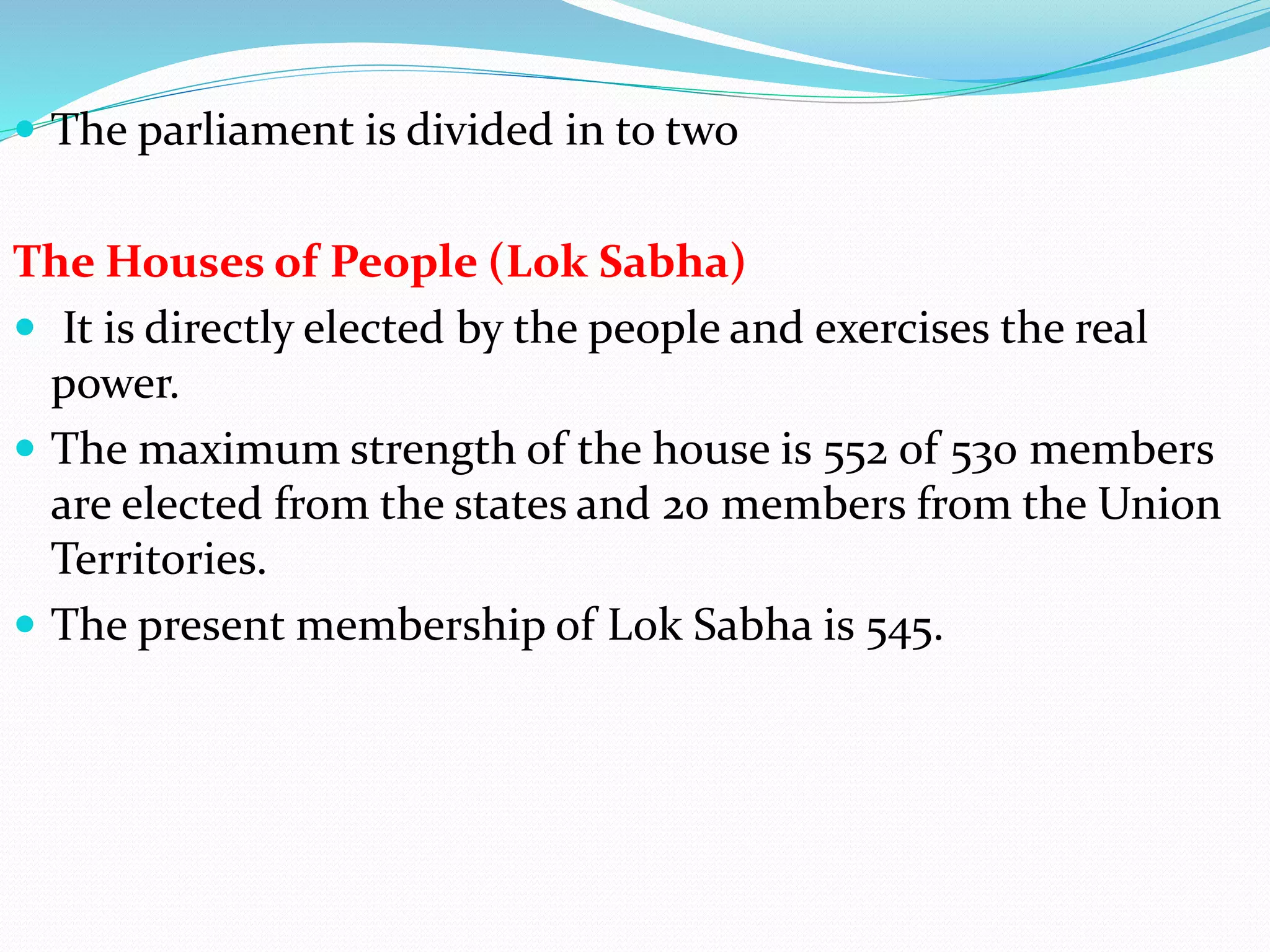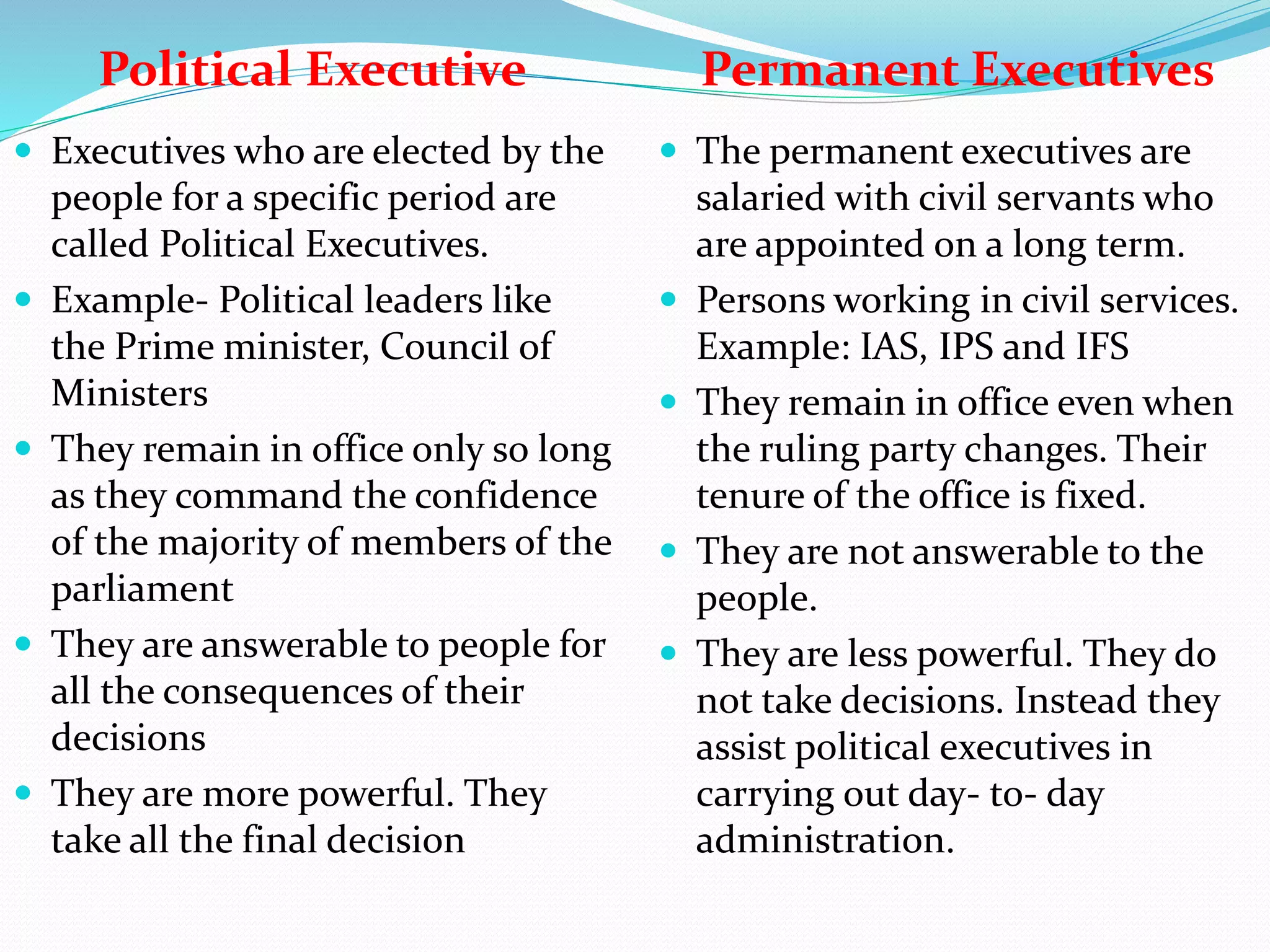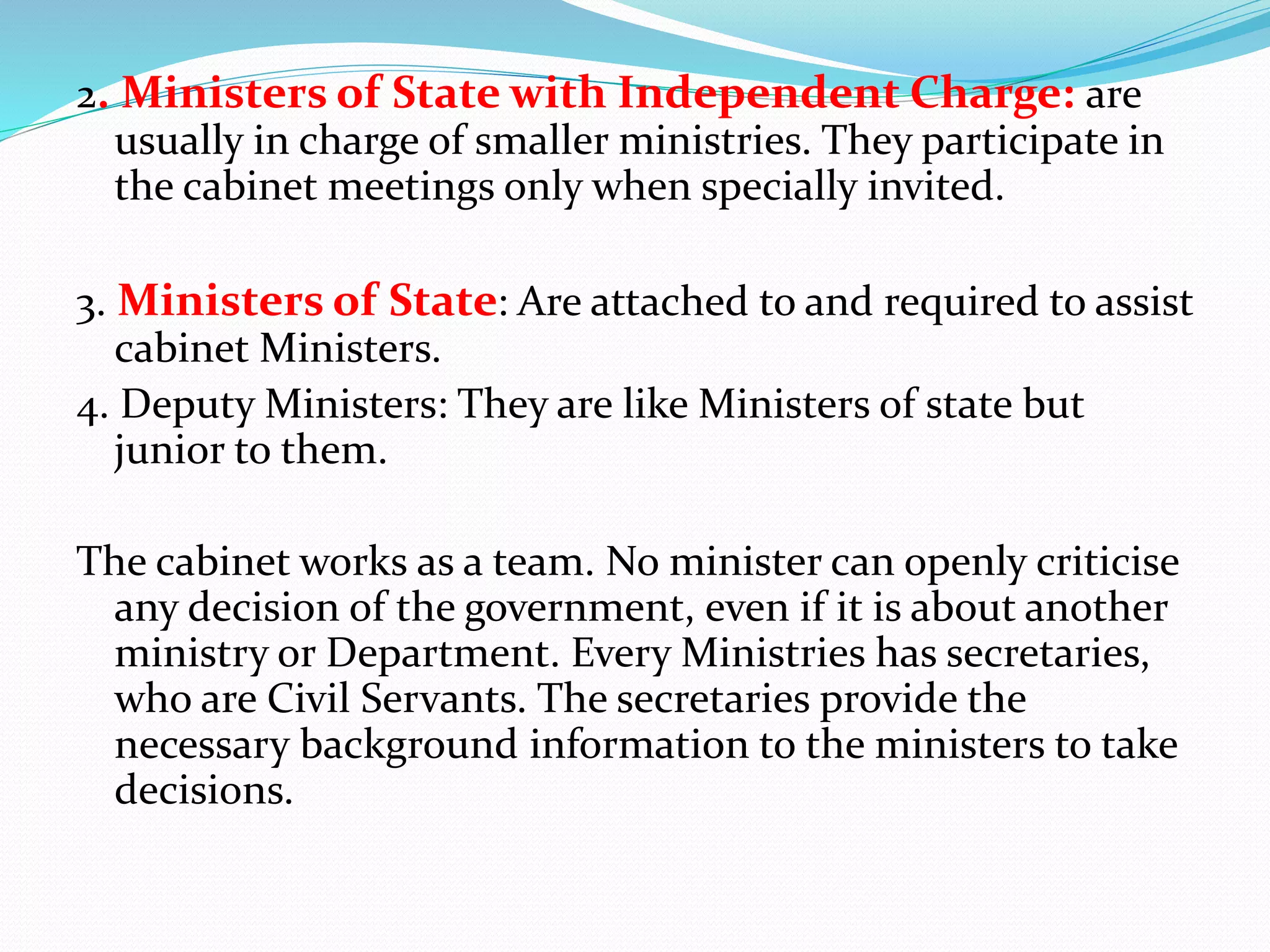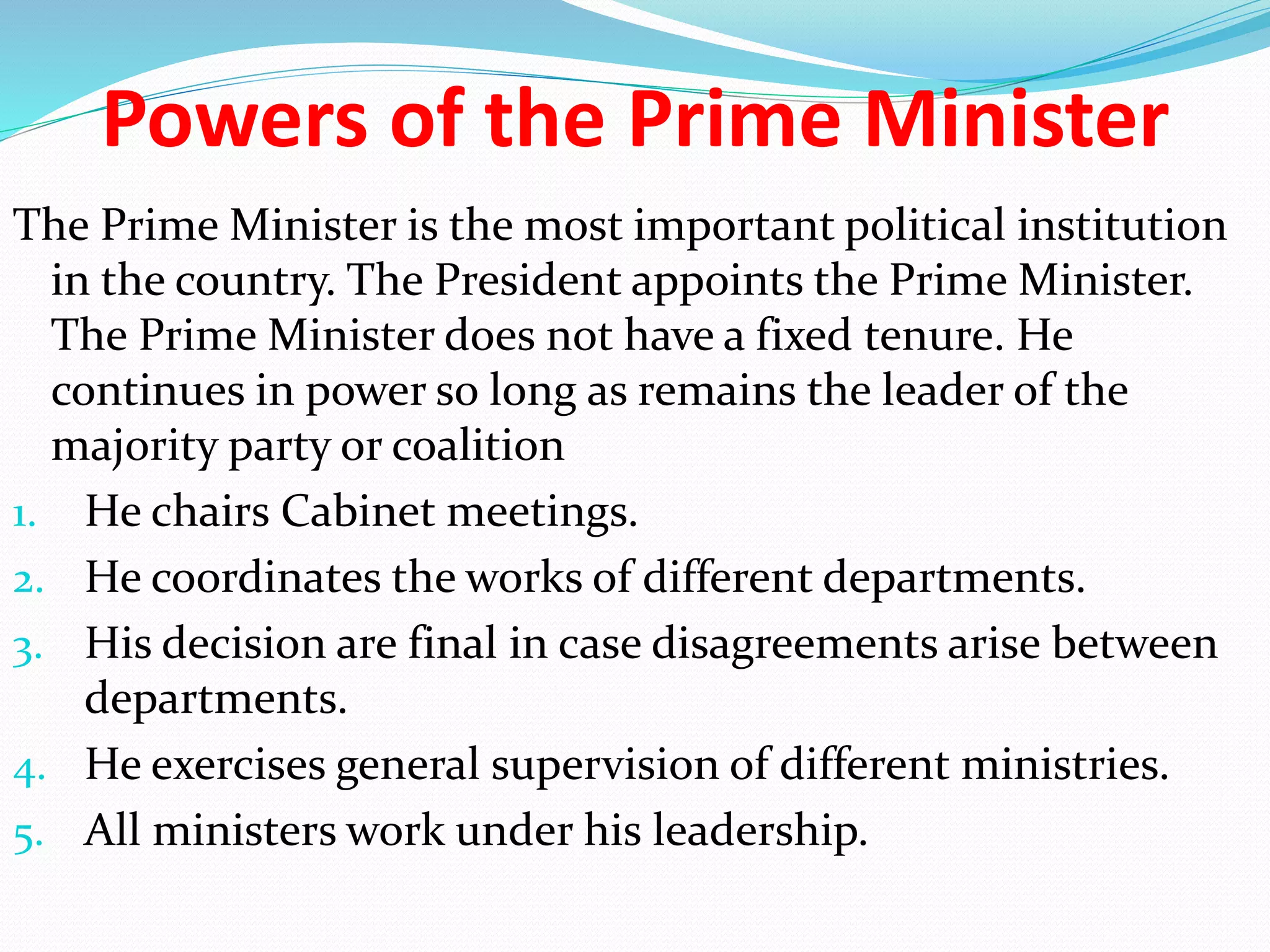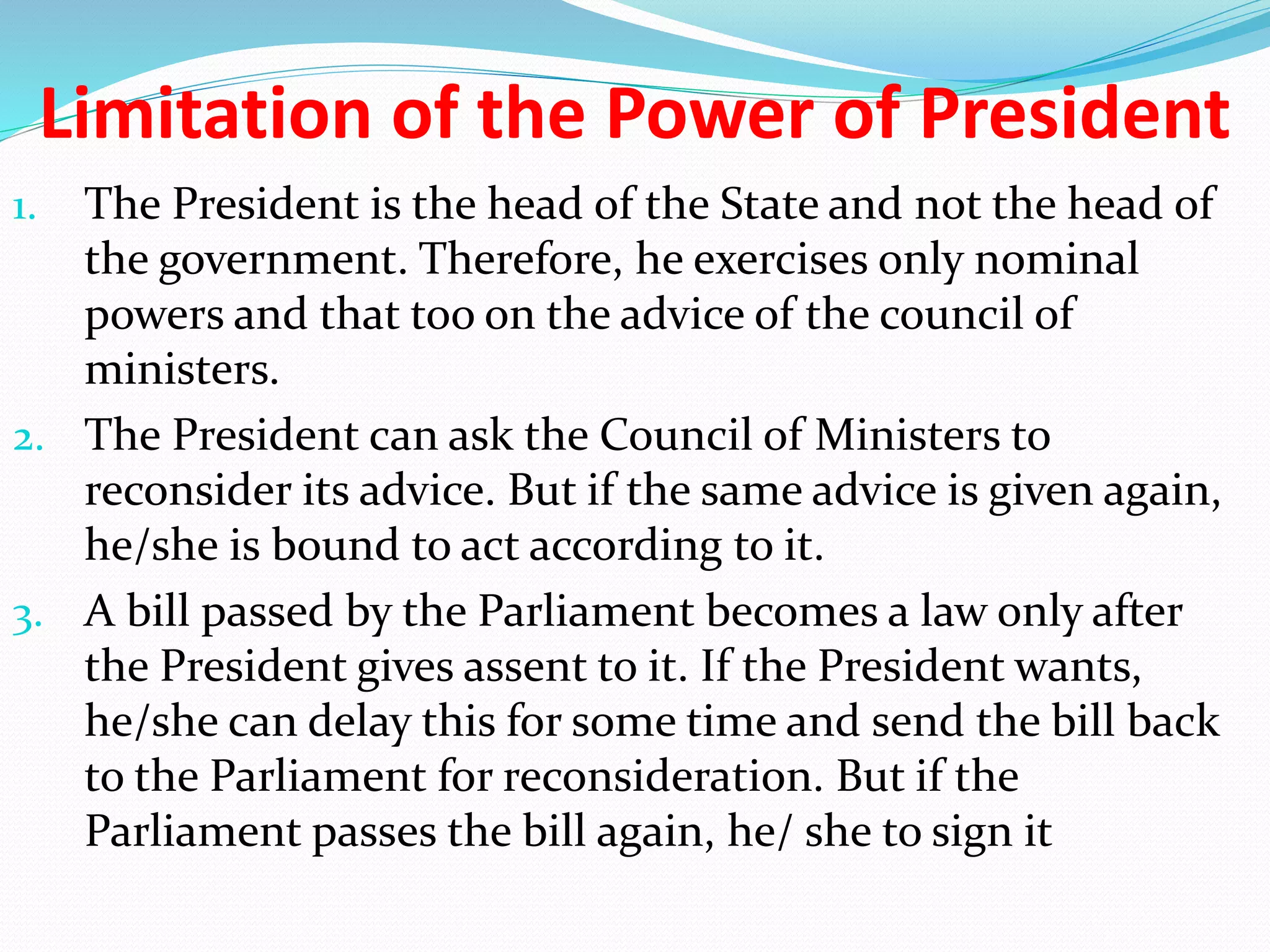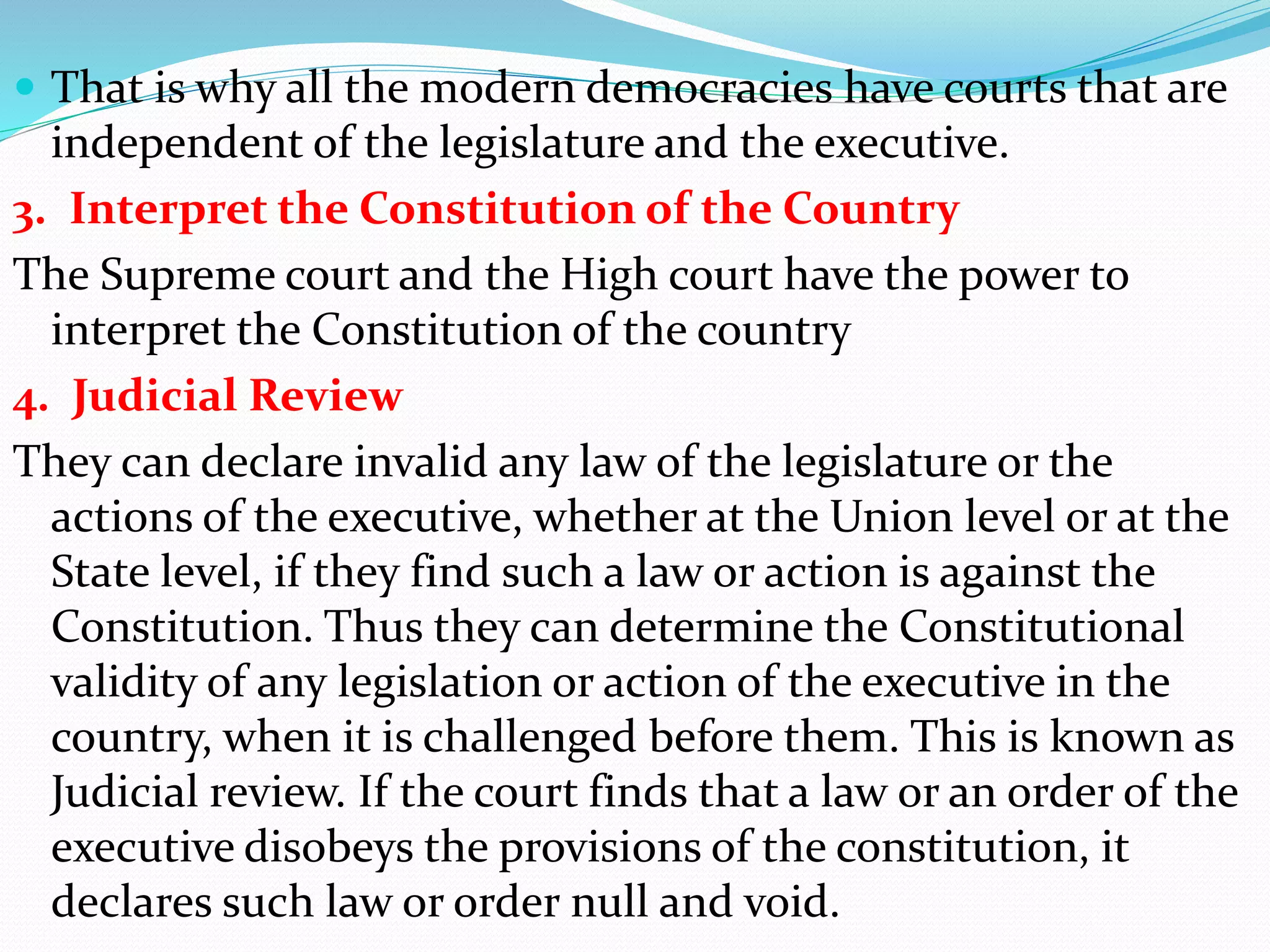The document summarizes key information related to the Mandal Commission report and its implementation in India through an Office Memorandum in 1990. It discusses the establishment of the Mandal Commission in 1979 to examine backward class representation. The commission recommended 27% reservation for other backward classes in government jobs. This led to widespread protests when implemented but was ultimately upheld by the Supreme Court with some modifications. The memorandum outlines the political and legal process around the commission's report and its impact.
